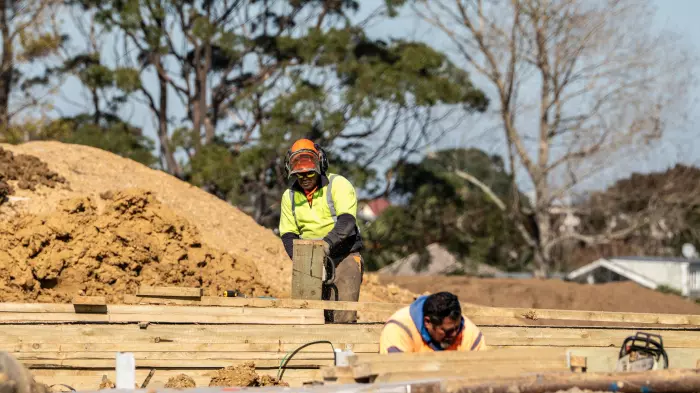South Port forecasts further disruption in supply chain
HALFYR
Tue, Feb 08 2022 03:46 pm
NZX Announcement and Media Release
SOUTH PORT HALF YEAR 2022 RESULTS
8 February 2022
South Port forecasts further disruption in supply chain
Net earnings by South Port New Zealand Limited (South Port) have held up relatively well in the opening half-year, despite significant disruption in the supply chain and uncertainty created by the pandemic.
South Port’s revenue for the first six months to 31 December 2021 was $23.3 million (1H21 $23.4 million).
Net profit after tax was $5.9 million (FY2021 $6.1 million).
Container volumes, however, were negatively impacted, showing a 23% decline for the half-year.
Bulk cargo volumes were consistent with the previous financial period and in line with expectations, however are expected to decline in the second six months due to reduced demand in the Chinese log market.
Total cargo activity was 1,745,000 tonnes compared with 1,720,000 tonnes in the prior year interim period, representing an increase in cargo flows of 25,000 tonnes or 1.5%.
Factors impacting this interim result included:
- The log market is currently in a downward cycle due to decreased demand and high inventory levels in the Chinese market. It is expected that this market dynamic will improve in the coming months.
- International container supply chains continue to be significantly disrupted as a result of the ongoing COVID-19 pandemic.
- Cold storage volumes declined due to a reduction in meat storage and fish vessels calling at the port
- There were increased stock food volumes imported into the Southland region to service the dairy industry.
“Disruption in the container supply chain is a worldwide phenomenon which has reached all corners of the globe, including South Port, impacting both volumes of cargo and the number of ships calling at the Port,” said the Chairman, Mr Rex Chapman.
Nevertheless, South Port Directors have declared a steady fully imputed interim dividend of 7.50 cents per share (2021 – 7.50 cents) payable on 8 March 2022.
Cargo
South Port Chief Executive, Nigel Gear said, “increases in cargo were recorded in stock food (+41,000 tonnes) and aluminium (+28,000 tonnes); however, other bulk cargoes were negatively impacted with logs (-29,000 tonnes) in comparison to the prior half-year.”
“Containerised cargo decreased 23% to 20,800 TEU (FY2021 27,000 TEU). The main decreases were reflected in forestry and fertiliser products.”
“Container vessels transiting the Port were down 32% on the same period last year, at 17 calls (FY2021 25 calls).”
Operations
The Port’s dairy warehousing operations continue to operate well, handling similar if not increased volumes of cargo through these facilities.
Cold Storage however has been impacted by a reduction in deep sea fishing vessels calling to the port and meat stored from local processors.
The New Zealand Aluminium Smelter (NZAS) is operating on an Electricity Supply Agreement through to 31 December 2O24. Meridian Energy and Contact Energy are now investigating the establishment of largescale green hydrogen opportunities in the region to make use of the electricity resources from 1 January 2025, should the Smelter close.
“South Port, while supporting the work being carried out by the electricity companies, believes that there is the capacity to support both NZAS and the establishment of a hydrogen plant in the region post-2024,” noted Mr Gear.
Capital Works
A significant part of the current Kia Whakaū project is the capital dredging of the entrance channel, swinging basin and berth pockets. South Port has applied for a resource consent to dredge and remove seabed materials up to 160,000 m3 of both soft sediment and rock.
The Port’s new 65 tonne bollard pull Azimuth Tractor Drive (ATD) tug, the Rakiwai, which was built in Damen Song Shipyards in Vietnam at the cost of $10 million, will be operational in March 2022.
Mr Gear said, “excellent progress is being made on the upgrade to the Town Wharf which services the petroleum import activity for Southland and the Wakatipu Basin.”
“The installation of the Impressed Current Cathodic Protection (ICCP) system on the Port’s Access Bridge is also making good progress.”
Outlook
“The COVID-19 pandemic continues to create uncertainty in the marketplace and to provide challenges to our business operations,” said Mr Chapman.
“Containerised activity will continue to be impacted by the disruption in the supply chain which is not expected to improve until 2023 at the earliest.”
“The outlook for export log markets is expected to remain subdued until at least the second quarter of 2022, post-Chinese New Year, however other bulk cargoes are expected to hold up well during this time.”
Based on all known factors at the date of releasing its 2022 interim result, South Port estimates that its full year earnings should fall in the range of $9.70 million to $10.00 million (FY2021 - $10.71 million).
Last year’s record profit of $10.71M resulted in an increased full year dividend of 27 cents per share. In the event that the Company’s FY2022 year-end profit falls within the forecast range then it is expected that the full year dividend payment will be maintained at 27 cents per share.
ENDS
FOR FURTHER INFORMATION PLEASE CONTACT:
Mr Nigel Gear
Chief Executive
South Port New Zealand Ltd
Tel: (03) 212 8159
Email: [email protected]
Mr Rex Chapman
Chairman
South Port New Zealand Ltd
Mobile: 027 454 8455
Email: [email protected]
MEDIA:
Warren Head
Head Consultants Ltd
Mobile: 021 340 650
Email: [email protected]




